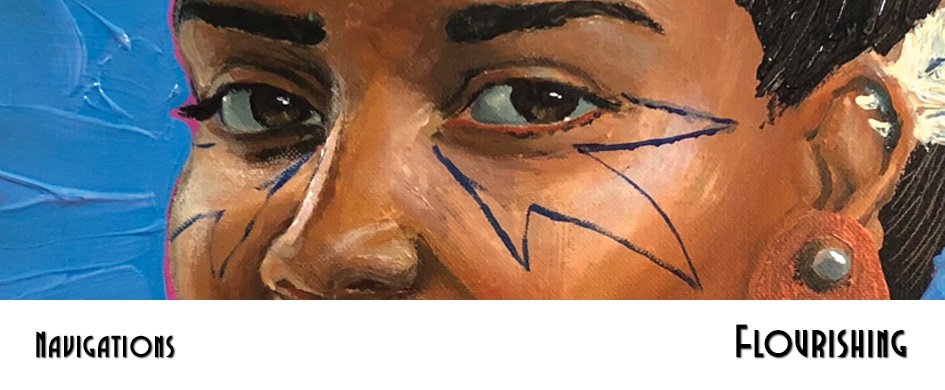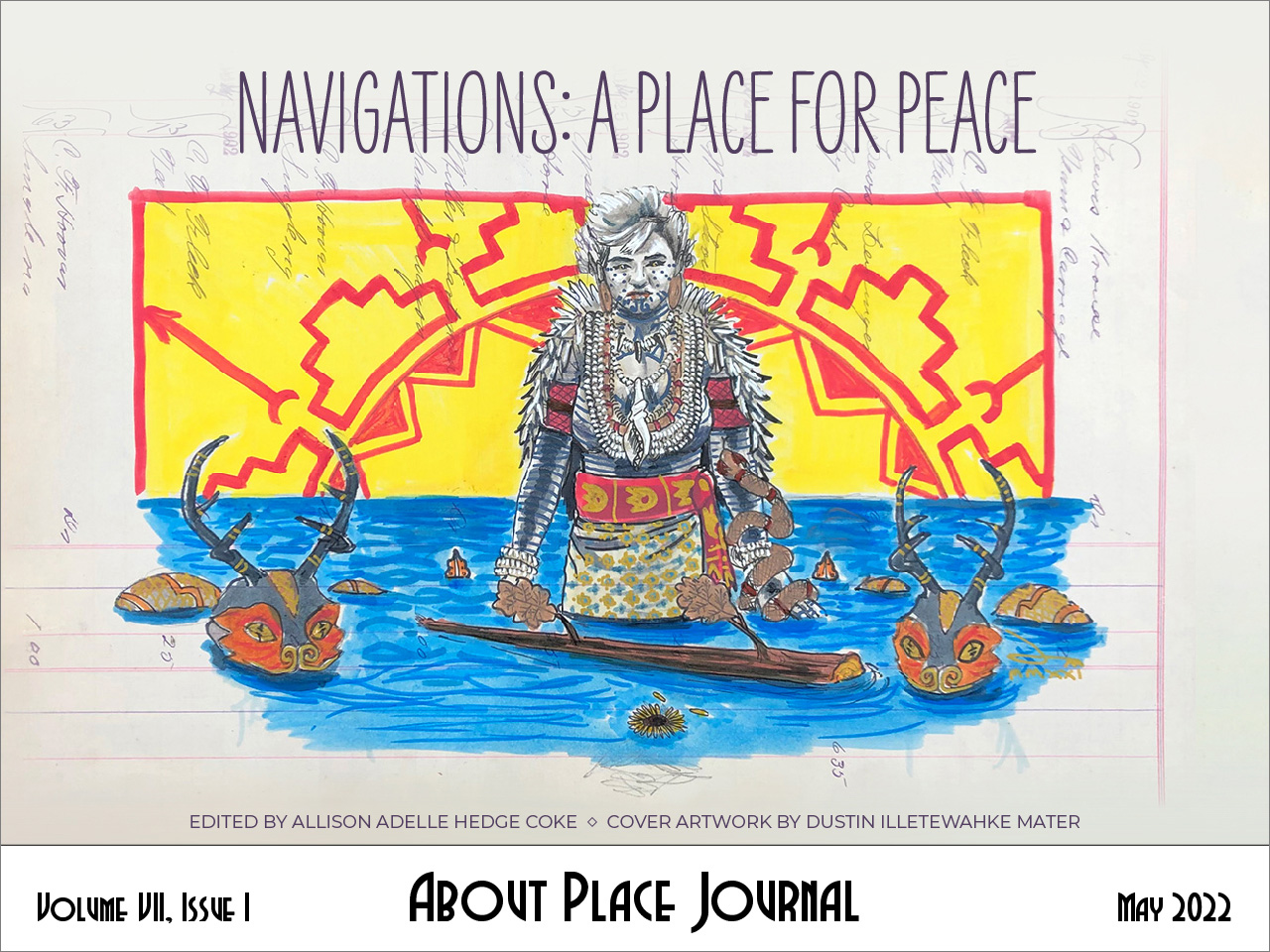All of us, regardless of where our ancestors lived in time immemorial, carry within us our own traditional knowledge of how to live rightly on Earth. This is what unites all living beings and makes us who we are—as individuals, as communities, as nations. Our global and local cultures differ vastly, but during an earlier time in our emergence as peoples, while learning not only to survive, but thrive, we developed our own creation myths and stories. And early on, we learned that this meant living in peace with other beings on Earth. Regardless of our cultures, or who our ancestors were and how they lived, our unique Traditional Ecological Knowledge (TEK) was founded on values of reciprocity, peace, and humility. The Lakota call this Mitakuye Oyasin, which means “we are all related.” Western environmental philosopher and ethicist Kathleen Dean Moore calls this kincentric perspective The Ecology of Caring.
The world has changed much in the past 5000 years. The human population has exploded. Pandemics, war, and greed ravage humanity. As a species, we are dying of our own too much. And at no time has our TEK been more meaningful for our survival. It is there, within us, for us to tap into if we open ourselves to it. If only we would.
Recently during a conversation with a colleague about risk-management in the field, I mentioned that over the years, while doing fieldwork as an ecologist, I have had more than 1000 encounters with grizzly bears. “You are very bold,” he said. I do not consider myself particularly bold, or brave. But I pay attention with my heart and senses to what is happening around me. And by doing so, I receive lessons.
One of the most powerful lessons I’ve had about TEK came from a mother bear in mid-May, a few years ago. It was late afternoon and my field crew and I were walking in traditional Niitsitapi (Blackfoot) land in what is today a national park, on a narrow trail, leaving a site where we’d been collecting data about the effects of burning done by park managers to replicate the sort of traditional light burning the Blackfoot had done for millennia in this landscape to improve the health of the plant communities, and in turn, improve the health of the animals—elk and bison—nourished by those plants. As we walked, we had a lively conversation about how prescribed burning improves the vigor of serviceberries, prairie grasses, and aspen saplings. These plants, the animals, and Blackfoot ancestors had co-evolved with both wildfire and human-set fire integral to their wellbeing. When European settlers arrived in the 1850s, these colonizers had suppressed all fire as much as possible, including Indigenous burning. Over 170 years later, this had created an ecological disaster, with overgrown stands of stunted aspen choking out berries and grasses. Today, here and in many other landscapes previously sculpted by Indigenous-set fires, ecologists are working with managers and Tribal Nations to use TEK to restore ecosystems—termed ecocultural restoration.
I was in the lead that day on the trail as we came around a tight bend, engrossed in our conversation about TEK. All at once, about 20 feet in front of us in the middle of the trail, we saw an enormous, beautiful amber-colored grizzly bear mother, with two tiny cubs of the year. She sat with her broad, silver-tipped back toward us, her face turned three-quarters away from us. She and her cubs fed on the fresh carcass of a small mammal on the trail. The sight of her stopped us cold.
A close encounter with a mother bear with cubs is one of the most dangerous bear situations that can arise. The only thing worse is an encounter with a bear feeding on a carcass. Inadvertently, we’d walked into a bear situation that was just about as dangerous as possible.
I’d trained my field crew thoroughly in bear safety, using best scientific methods to prevent bear attacks. We all carried compact canisters of holstered bear spray on our belts. The spray consisted of capsicum (cayenne pepper). By gently slipping off the bright-orange safety cover and firmly depressing the lever on top of the canister, one could instantly release a scarlet cloud that would carry for about 15 feet and linger in still air for minutes before dissipating. If sprayed directly toward a charging bear, that cloud created a noxious barrier that could stop them in their tracks, without harming the animal. In fact, bear spray had saved many of my colleagues from grizzly bear attacks. However, bear spray is something one should use only as a last resort, when a bear is about to attack.
Our encounter with the mother bear happened so unexpectedly and so quickly that we didn’t have time to get our bear sprays out of their holsters. I’d taught my field crew to above all stay calm when bumping into a bear, so as to not provoke them. And they did. We froze, then started walking backwards, slowly, to put some distance between us and the bears. As we backed away, the mother bear flicked one of her ears toward us, the way a horse flicks her ears toward her rider to communicate, and I could see the corner of one of the bear’s eyes turn our way. But that was all. She and her cubs continued to feed calmly, as if we weren’t there. Once we’d retreated about 50 yards, we proceeded to bushwhack a half mile upslope through a thick stand of aspens, and then around the bears, giving them a very wide berth, and back down to the trail toward the trailhead, where our vehicle was parked.
As an Indigenous person, I don’t care for the word “encounter” to refer to meeting an animal. But “encounter” is the appropriate wildlife risk-management and law-enforcement term to describe our meeting with those bears. A wildlife “encounter” is defined as an incident where you notice an animal and it notices you and reacts to you. I also don’t like the word “it” to refer to any animal. At any rate, when we got back to our field vehicle, per wildlife risk-management policies when leading a field crew in bear country, I debriefed with my staff, to make sure everyone was all right emotionally and physically and to get all the facts straight. Typically, on my project this meant sharing food while talking through an incident. I broke open some elk summer sausage and some chocolate and passed them around.
“Man, that was a close one,” said my lead tech. “That bear, she didn’t even notice us!”
“Yeah,” said another tech. “I thought for sure we’d be next on the menu for her and her cubs!”
I listened as the rest of my crew shared similar perceptions of our meeting with the mother bear and her cubs. When they were done, I shared my perspective. I said I thought the bear knew exactly where we were, that her choice to feed on the trail had been deliberate, and that further, she had come to that spot for protection from male bears.
Our work took place in the early spring, at a time when there were few park visitors, and nobody used this trail. We’d gone into our study site early that morning, leaving our scent on the trail. Several of us had taken bio-breaks next to the trail, in the process scent-marking the trail. We’d been working in this park for many years. That bear was a mature female in her prime, judging from her size, likely 10-12 years of age. Like human mothers, bear mothers must acquire wisdom to be able to protect their young and stay alive. I explained to my field crew that the mother bear knew us by our scent from other years and other seasons, when we’d been working in the park. Mother bears are creatures of habit who have compact territories compared to male bears. They don’t roam far, conserving their energy to keep their cubs nourished and alive.
Our meeting with the mother bear had taken place during the height of bear mating season. Male bears commonly kill a mother bear’s cubs to mate with her. GPS-collar data has shown that male bears tend to avoid trails and other areas frequented by humans. That mother bear, in her deep wisdom, knew we’d be coming back down the trail, and that our presence could deter male bears from approaching her. She trusted that because of our years of working peacefully around bears in that park, my field crew and I would know the right thing to do—which would be to not approach her, not blast her and her cubs with bear spray, and let them continue to feed in peace. When she flicked her ear and looked at me out of the corner of one eye, she was saying, “I know you are a mother too. Please help us be safe.” And I had.
The next day, we worked in a grassland about a mile away, to give the mother bear and her cubs their space. There, as we pulled a transect tape, we saw in the distance a pair of grizzly bears mating energetically. “How did you know?” asked my field crew. I just smiled. When I glassed the bears with binoculars, I saw that the female was different from mother bear we’d met the day before, and I sighed in relief.
Back to my colleague’s comment about me being bold to work around all those bears. There was no boldness involved. Just openness, humility, and reciprocity, from her to me, from me to her, mother to mother. It was instinctive, intuitive, and immediate. Yes, we had the best tool Western science could provide to keep us safe—bear spray. We also had park radios to call for help. But, we also had the very best tool humans had to live peacefully with other animals—reciprocity. So in response to my colleagues who are not Indigenous and come from the world of best Western science (as I do as an ecologist), I say that the way I stay safe around all those bears is by practicing two-eyed seeing. This means bringing together the best of both worlds: Western science and TEK. Across the 1000+ meetings with grizzly bears I’ve had, two-eyed seeing has helped me and my field crews navigate a peaceful path forward.
Yes, the world has changed. We have amazing technology to address things like anthropogenic climate change. That technology serves us well, but alone won’t solve the problems we face, just like on its own, bear spray would not have defused the situation with the mother bear. It takes looking at the world through both Western Science and TEK lenses to find the kincentric solutions we so desperately need in today’s world. Two-eyed seeing requires that we come together with humility, caring, and openness. That we listen to each other. That we treat human beings, regardless of our cultures, as equals. That we meet Indigenous people on their terms, much the way I had met the mother bear. And most importantly, that we realize that the Earth and wise beings like bears are our teachers. And if we listen and pay attention, we just might learn what we need to survive and even thrive, as our ancestors did.
As for the bear spray, I’ve never had to use it. But I always have it with me, and if need be, I wouldn’t hesitate to use it. That’s two-eyed seeing.
* * *
I thank all my field crews, who took all my lessons about bear safety to heart and always responded with reciprocity during our meetings with bears. I also thank Allison Adelle Hedge Coke, who has been a mother bear in my life, teaching me lessons about the power of story for Indigenous peoples in reclaiming our heritage and restoring our strength.


